The Lenovo Legion series of gaming laptops has become increasingly popular over the past few years, thanks primarily to offering impressive performance at a reasonable price tag. The core design of the Legion series is also one of the most purposeful I’ve seen in recent years, focusing on usability and performance while keeping itself financially accessible.
The latest iteration of the Lenovo Legion Pro 5i introduces an overhauled design as well as refreshed internal hardware, featuring an Intel 13th generation CPU and an NVIDIA GeForce RTX 40 series GPU. Our specific model is priced at around PHP 125,000.
Design & Features
The new Legion Pro 5i has done away with the more angular design of last year’s model and has adapted the more subtle aesthetic of the non-Pro model. The top cover with two diagonal ridges has been replaced with a flat cover with the Lenovo and Legion logos on opposite corners.
The redesigned vents are now less pronounced and feature a hexagonal design. The corners of the case are also more rounded and many of the edges are beveled, giving the laptop a softer overall look.
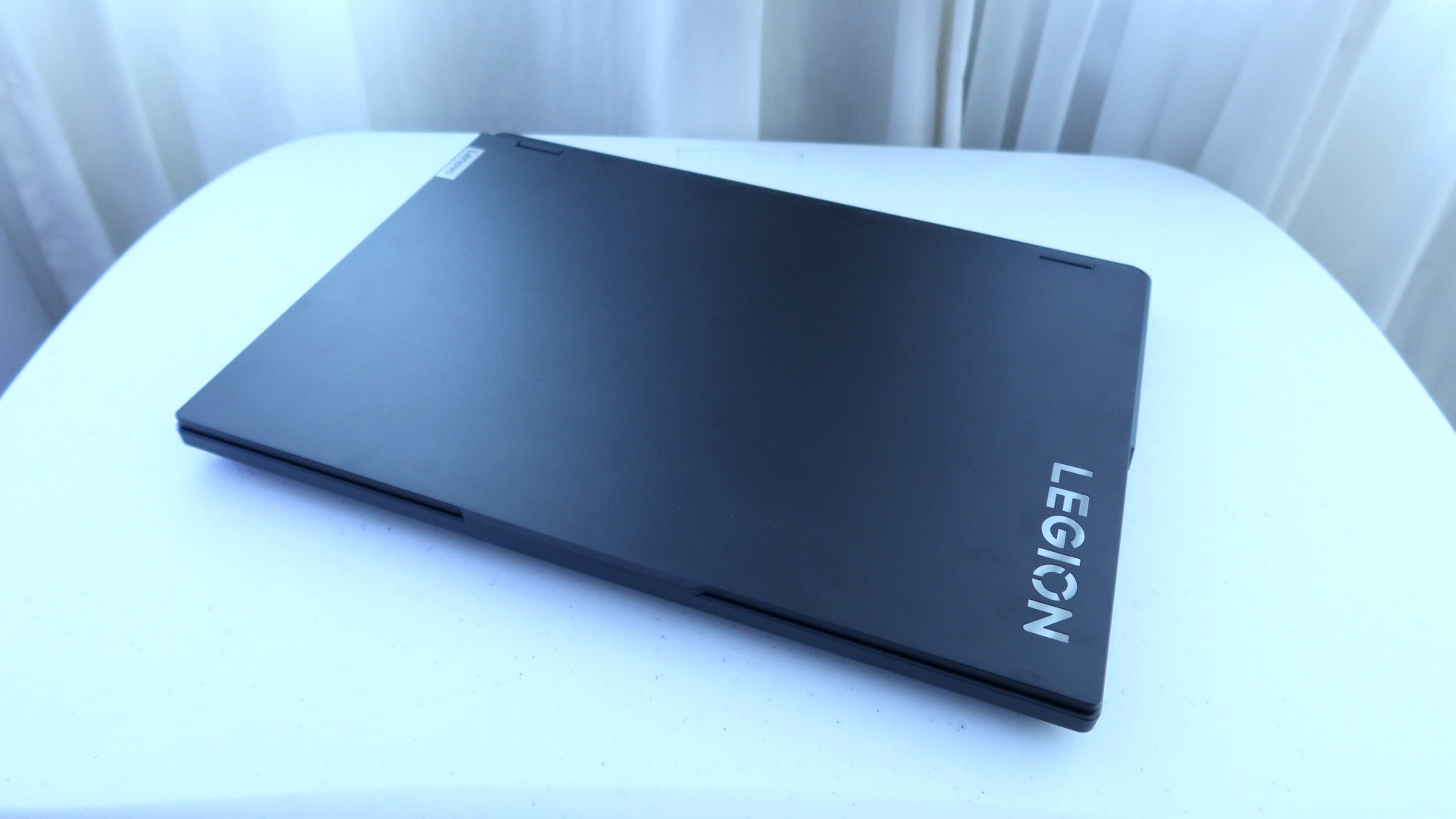
The bottom of the case features one long rubber foot at the rear of the laptop and two shorter ones up front. The longer rubber foot is pretty tall, increasing the space at the bottom of the laptop for better airflow for the humongous vent beside it.
While the top cover of the Legion Pro 5i is made from aluminum, the rest of the laptop’s case is plastic. The use of two different materials for the case helps keep the price of the laptop low without fully compromising on the protection of the most fragile part of the laptop, the display.
Nonetheless, the plastic used by Lenovo for the case is pretty rigid and the overall build quality of the Legion Pro 5i is excellent.
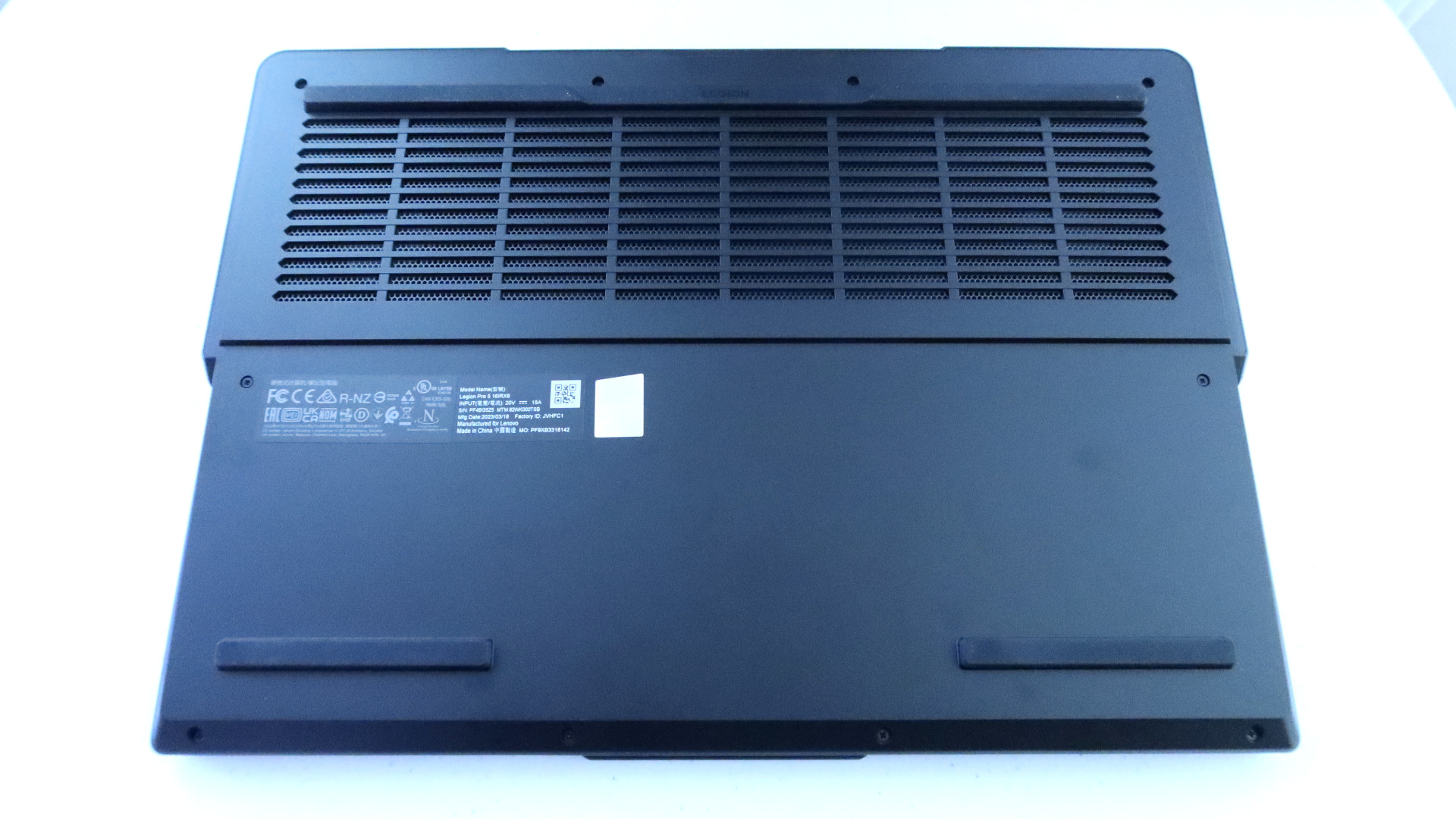
According to Lenovo, the Legion Pro 5i weighs around 2.55kg, which is pretty hefty but expected for a laptop of this size that isn’t specifically designed to be lightweight. It shouldn’t be a problem to stuff this in a backpack and carry it around.
The new look of the Legion Pro 5i is a marked improvement from its predecessor. The more unassuming design helps it appeal to a wider market that wants a capably powerful laptop that doesn’t necessarily scream “gamer.”
Display
Lenovo has equipped the new Legion Pro 5i with a similar display to its predecessor. It’s still a 16-inch WQXGA (2560 x 1600) IPS panel with a peak brightness of 500 nits, DisplayHDR 400 support, and an anti-glare finish. The only major difference with the new model is the upgrade to a refresh rate of 240Hz from 165Hz.
Like the switch to a plastic bottom case, the display of the Legion Pro 5i is another area where Lenovo decided to compromise to keep its price accessible. The brightness, contrast, and vibrancy of the display are decent enough. The anti-glare coating is also helpful to an extent, but is limited by the display’s peak brightness.
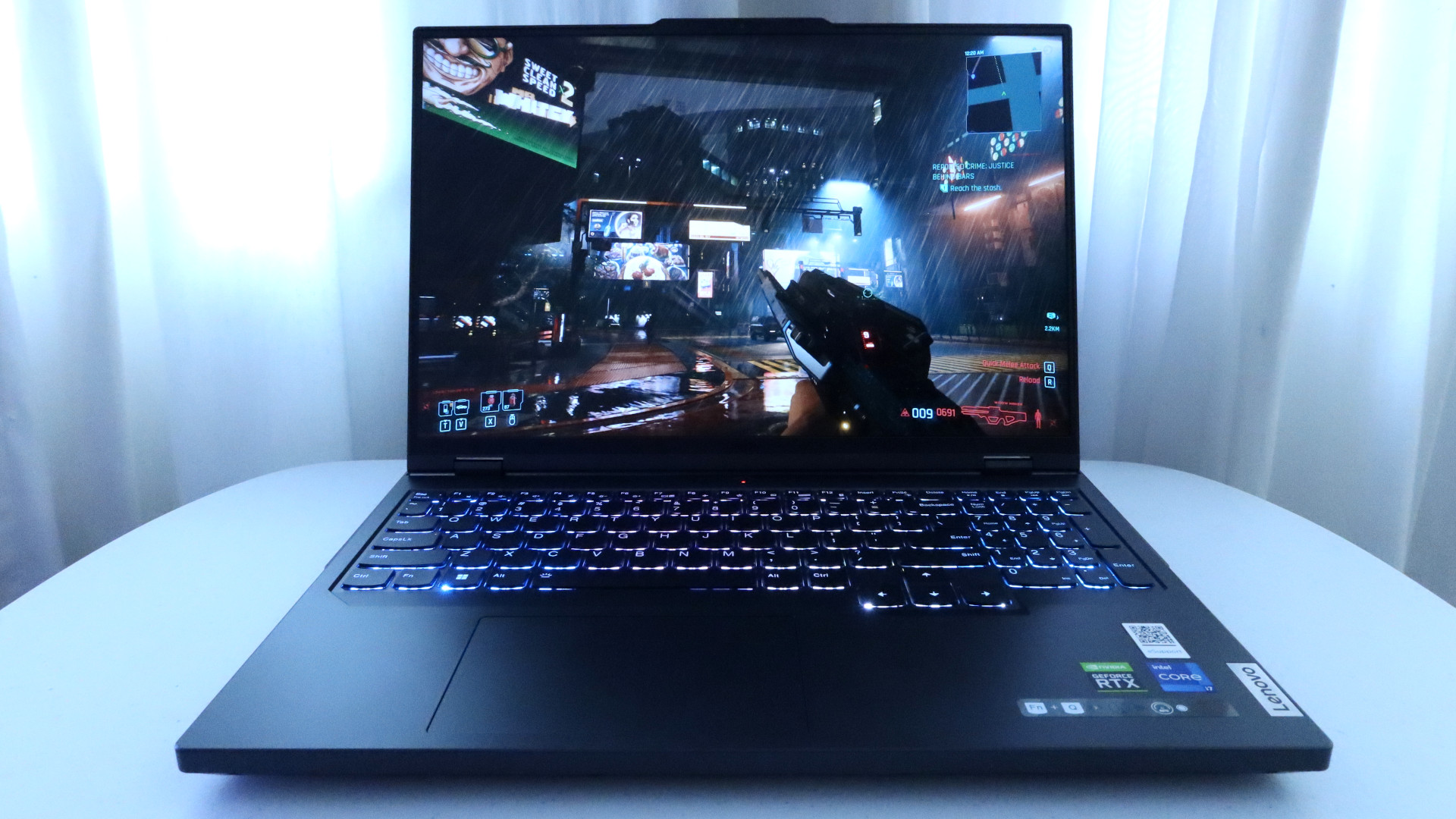
While it’s not the brightest or most vibrant display, especially when compared to an OLED or mini LED screen, it still looks pretty good and is more than adequate for gaming, especially when the upgrade to 240Hz is taken into account.
Ports
The port selection and arrangement of the Legion line of laptops is still one of the best I’ve seen in the market in recent years, and that still holds true with the new Legion Pro 5i. Most of the ports are found on the rear of the laptop, leaving both the left and right-hand sides of the laptop mostly free from obstructions.
The rear of the laptop features the power connector, an HDMI port, an RJ45 port, two USB Type-A ports, and a USB Type-C port. The left-hand side of the laptop is equipped with one USB-A and one USB-C port while the right features a single USB-A port, the webcam privacy switch, and a 3.5mm multi-audio jack.
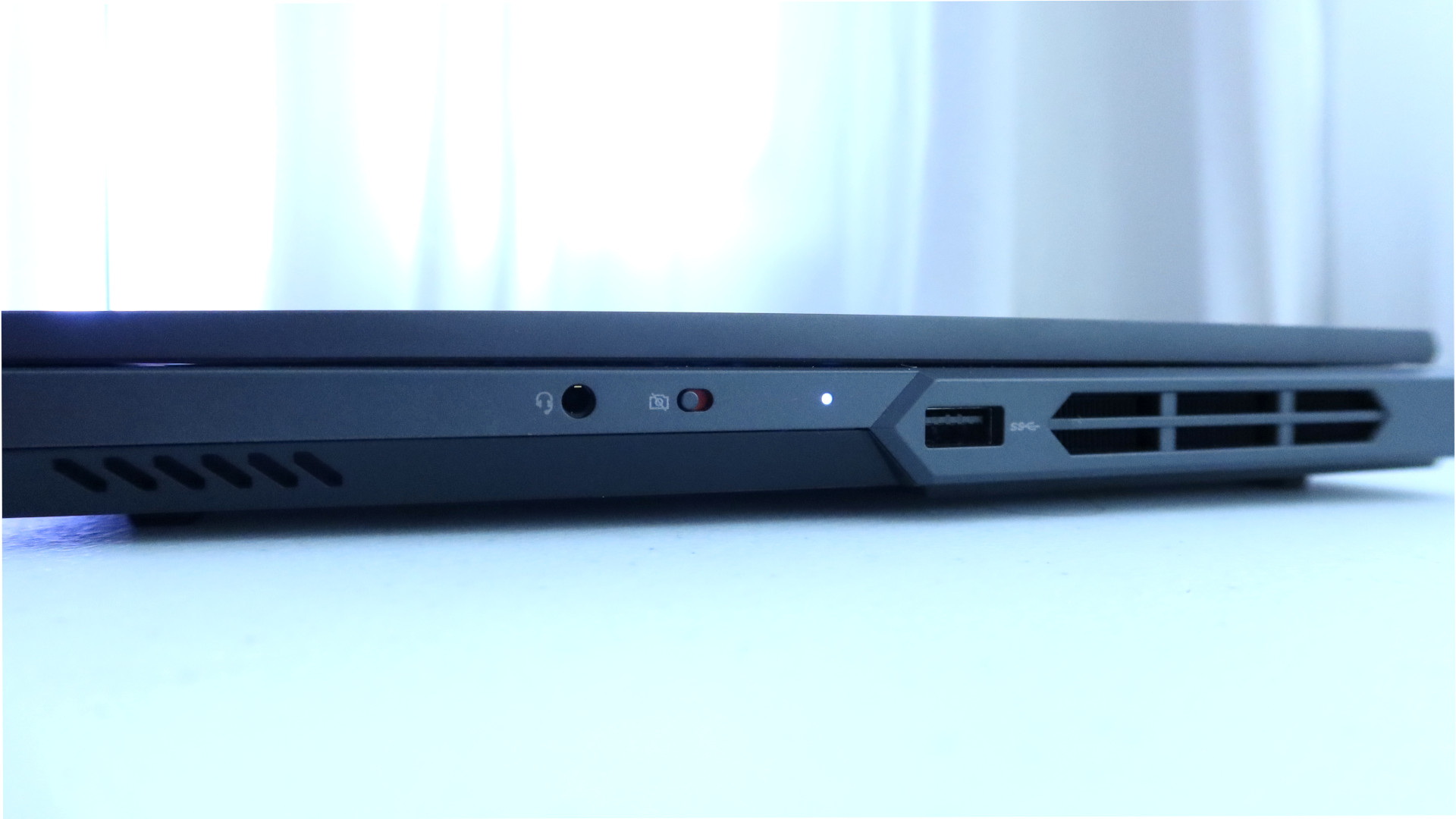
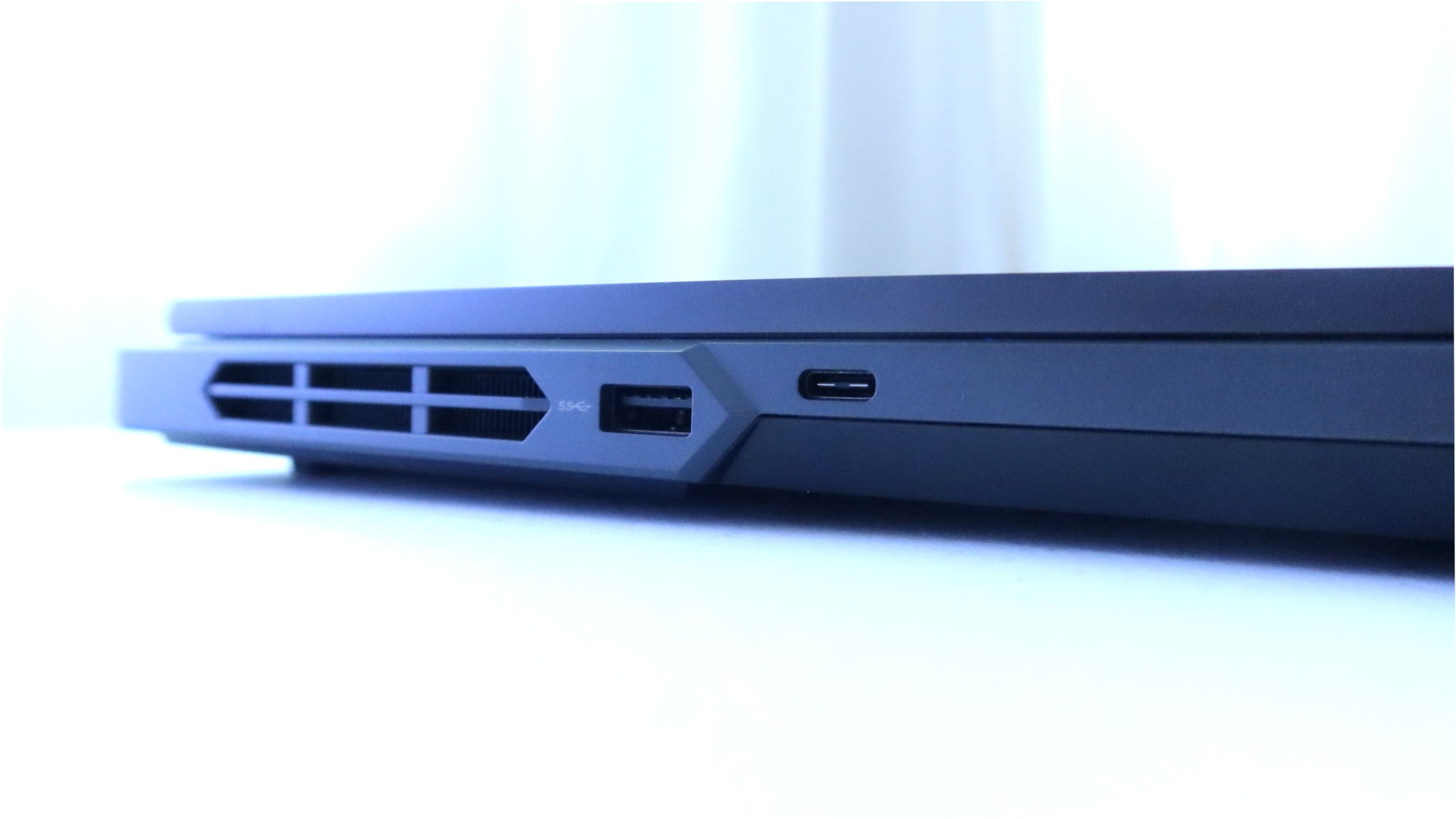
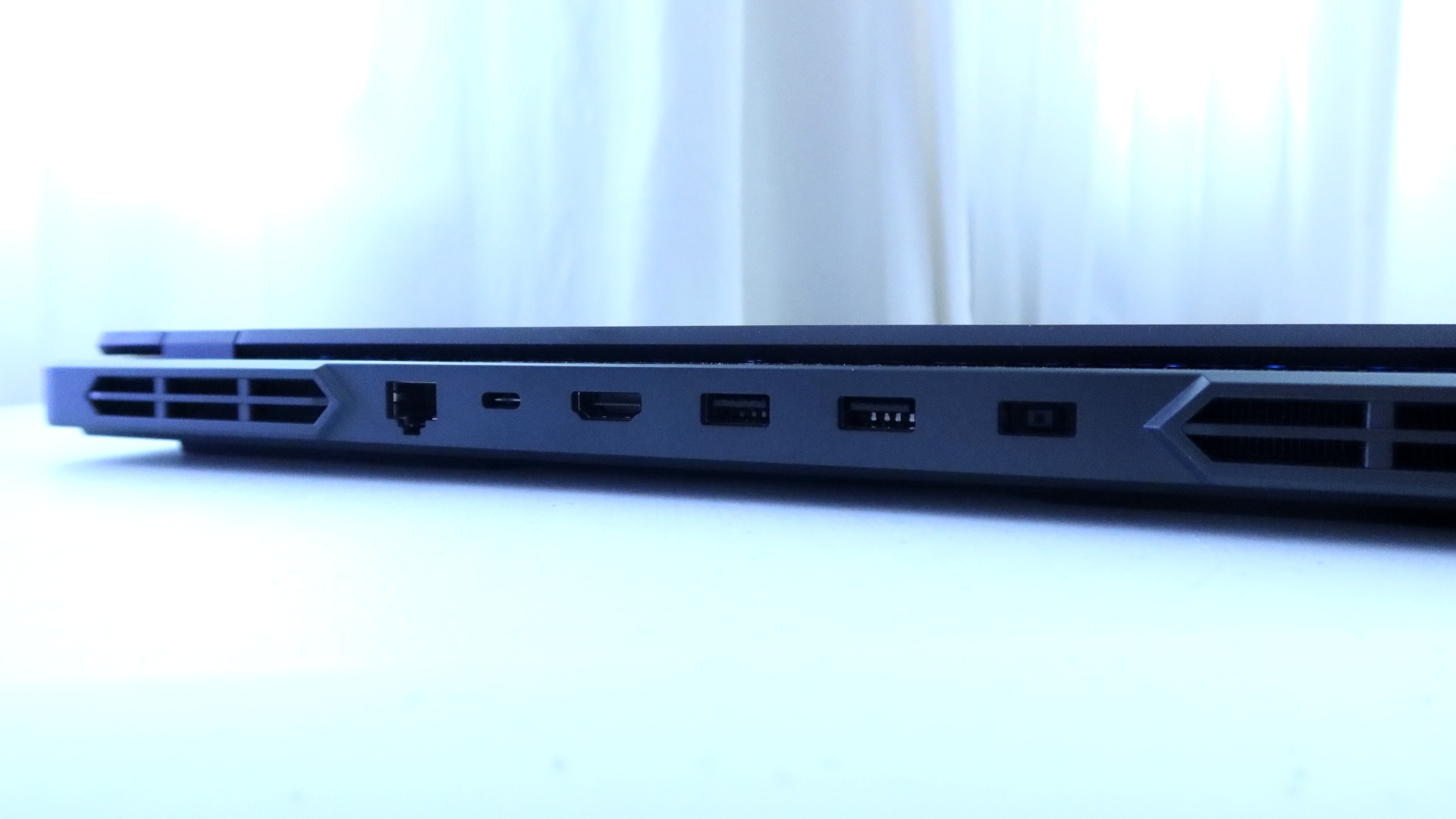
Keyboard, Touchpad, & Speakers
The TrueStrike keyboard from last year’s model has made a return in the new Legion Pro 5i. It comes with 4-zone RGB backlighting and the switches supposedly have a travel of 1.5mm. The layout and spacing of the keys makes gaming and typing on it feel generally comfortable. Even the slightly narrower numpad keys are easy to use, without worrying too much about mistypes.
A few things to note though are that the keys feel slightly mushy when bottoming out and that the short travel, while great for gaming, may be fatiguing after a few hours when typing. Regardless, it’s still a relatively good keyboard. However, as with keyboards in general, your mileage may vary.
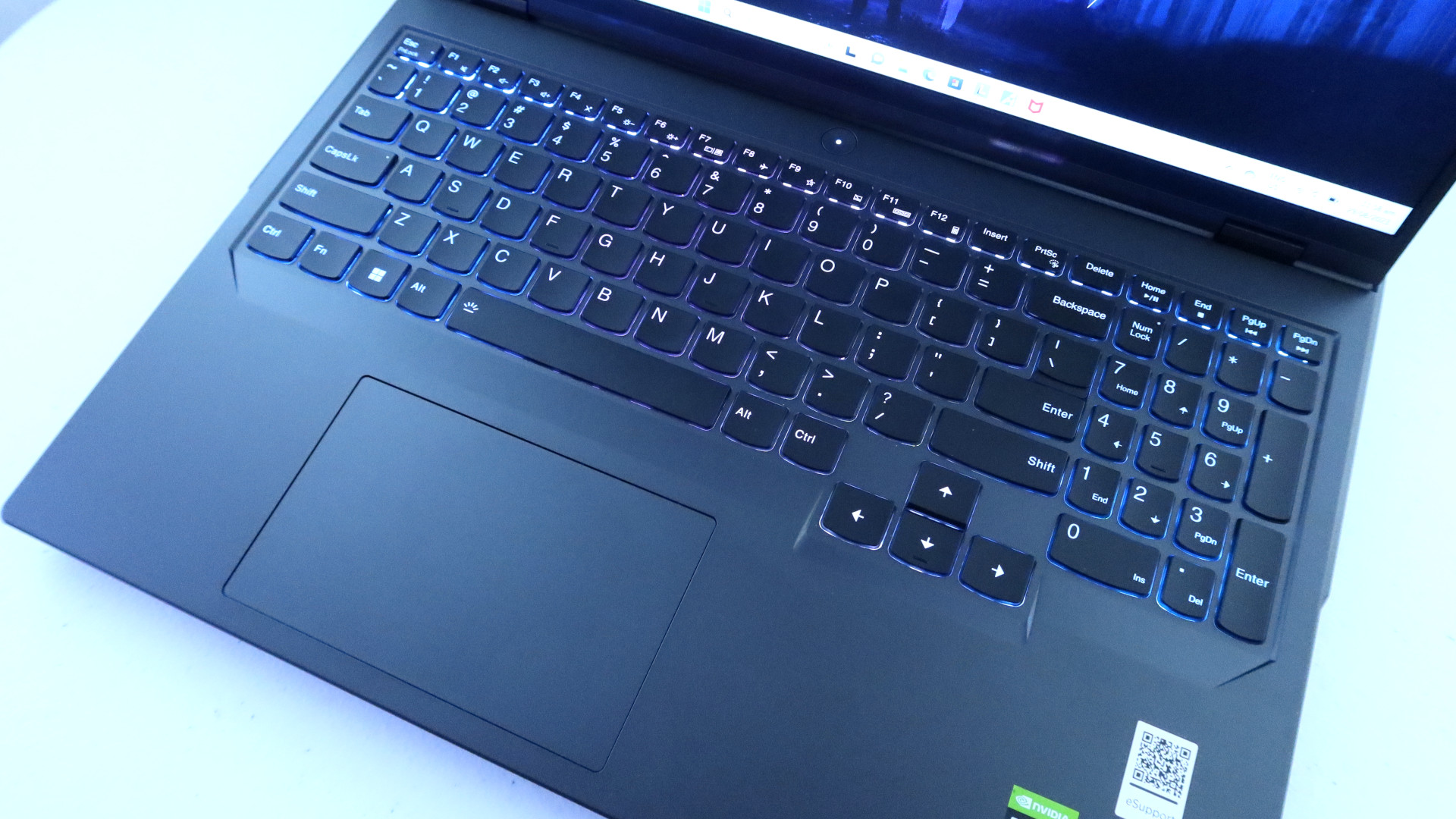
As for the Mylar trackpad. It isn’t anything remarkable. It’s decently sized and works well enough.
As with many laptop speakers, the dual 2W speakers of the Legion Pro 5i are more than good enough for casual listening or gaming but are relatively lacking in power for larger or louder spaces and depth for more involved or analytical listening.
Specs & Performance
Our Legion Pro 5i review unit was equipped with an Intel Core i7-13700HX, an NVIDIA GeForce RTX 4060, 16GB of 4800MHz DDR5 RAM, and a 1TB M.2 NVMe PCIe 4.0×4 SSD, which is a pretty capable set of hardware on paper.
I tested the performance of the Legion Pro 5i by running it through several synthetic benchmark tests as well as a number of video game benchmarks. Our synthetic benchmarks include the following:
- Cinebench R20
- Cinebench R23
- PC Mark 10
- GeekBench 5
- GeekBench 6
- 3D Mark
- Blender 6
As for our video game benchmarks, I used the built-in or independent benchmarking tools of the following video games:
- Final Fantasy XIV
- Cyberpunk 2077
- Borderlands 3
- Metro Exodus Enhanced Edition
- F1 2020
I ran the tests on the Legion Pro 5i’s Balanced and Performance modes for our synthetic tests and all three modes – Balanced, Performance, and Silent – so I could see how well and different each of the modes perform.
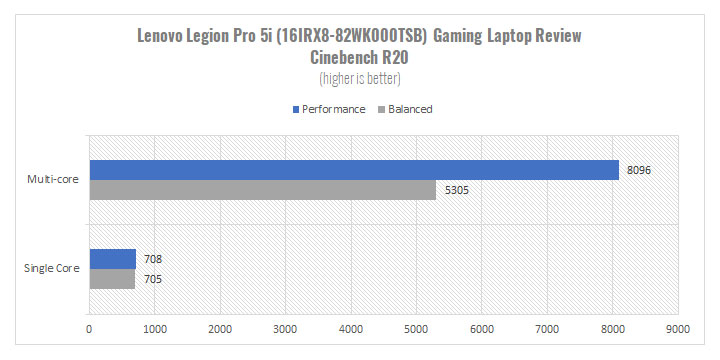
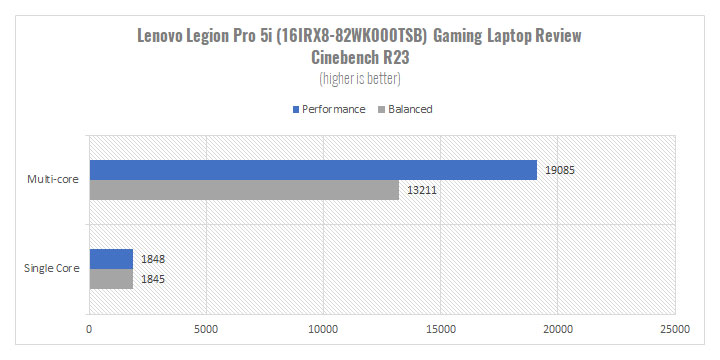
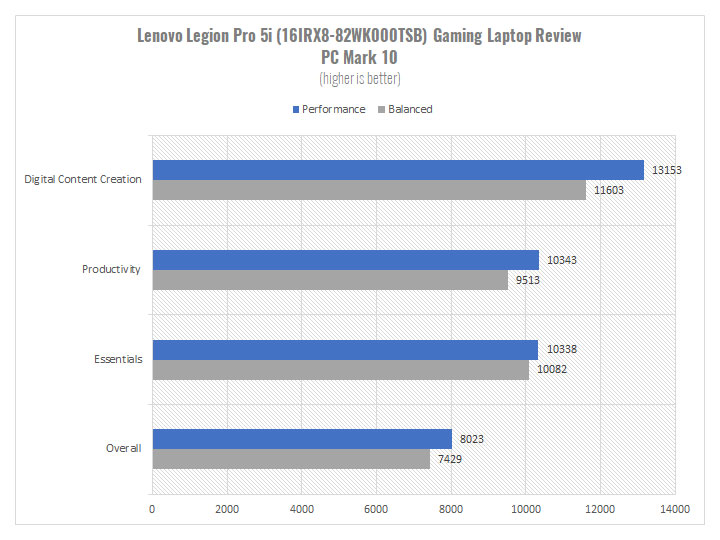
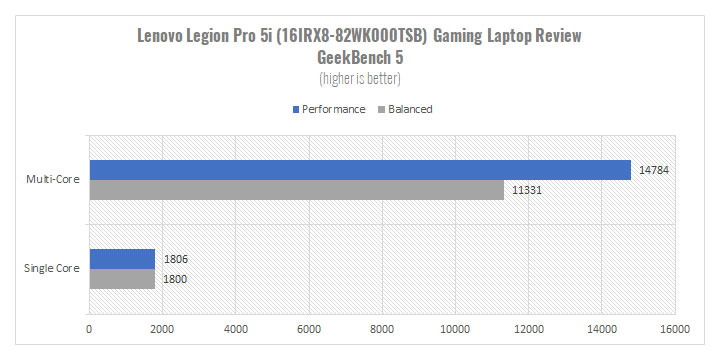
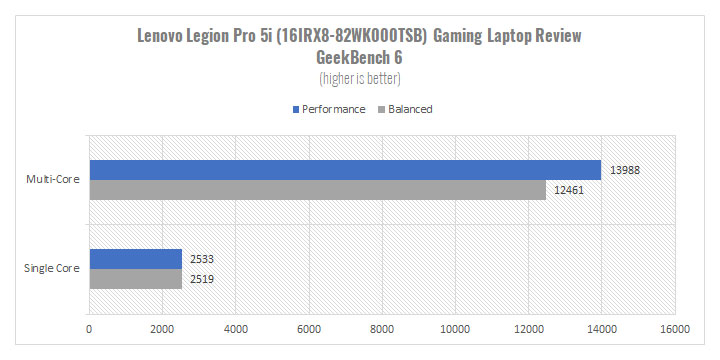
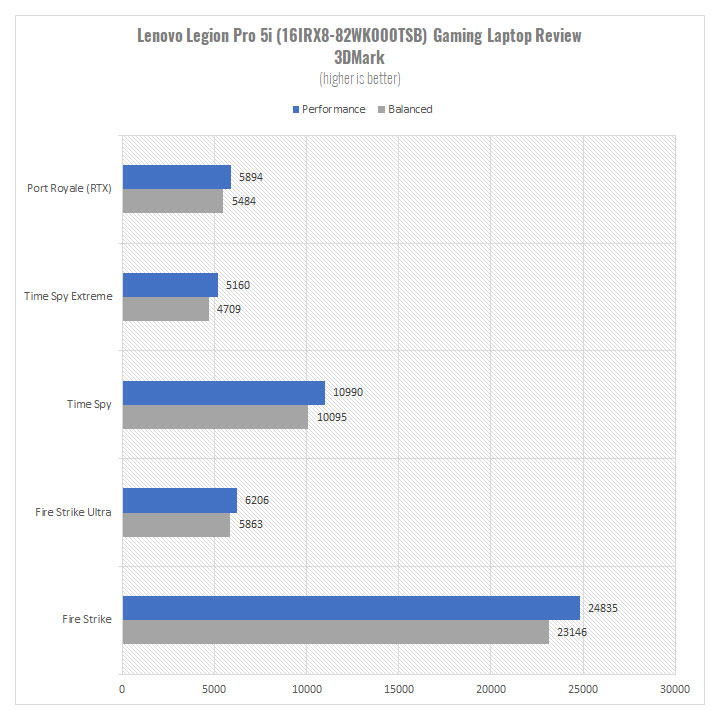
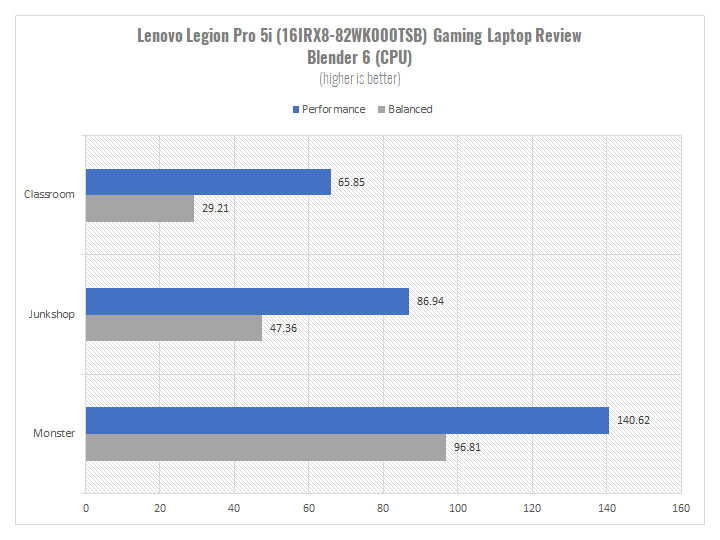
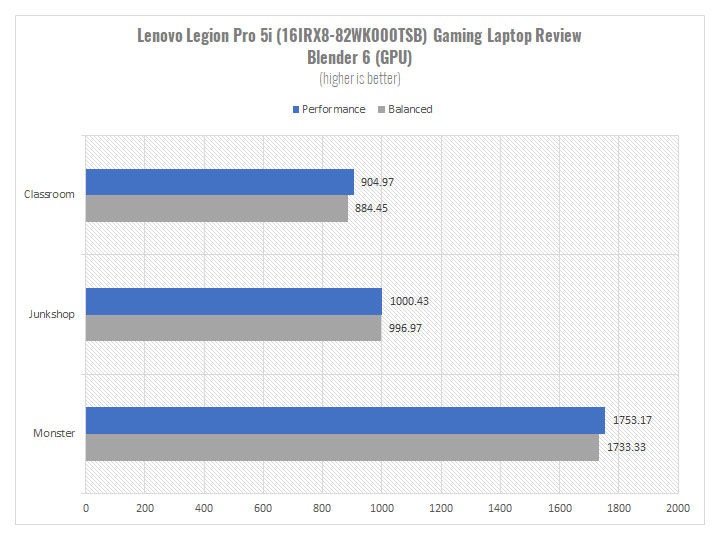
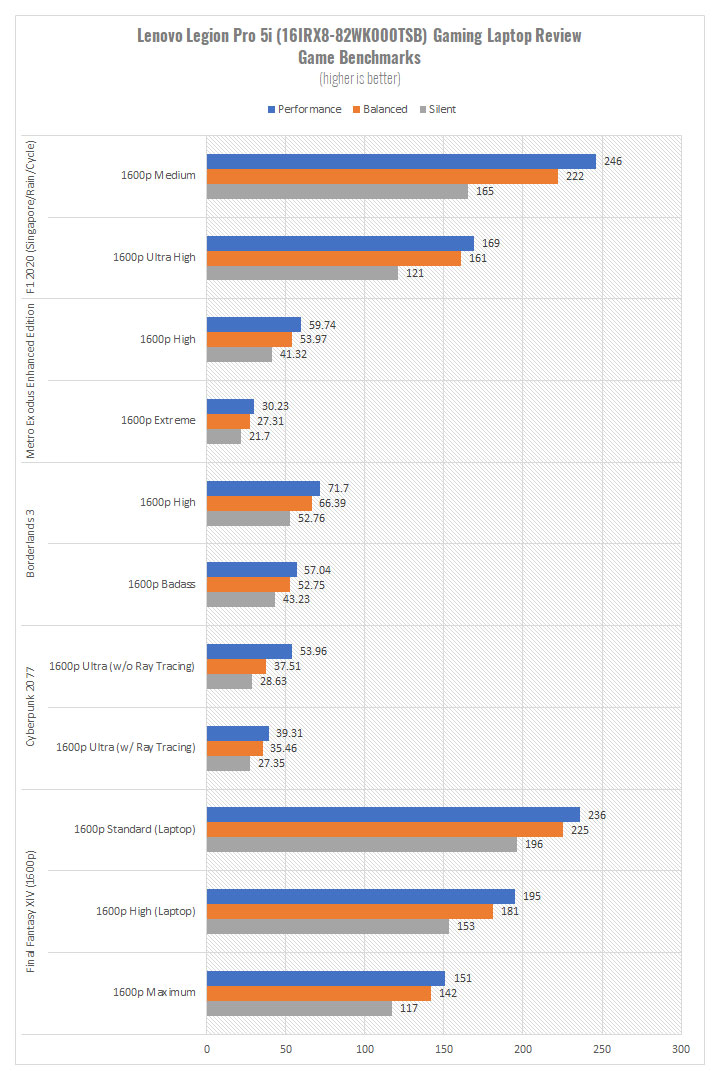
Looking at the results, I’m mostly satisfied with the performance of the Legion Pro 5i. It was able to score expectedly in the synthetic benchmarks and was able to run every game at a minimum of 30 fps, with some running way above 60 fps, even when settings are maxed.
Lowering the settings of some of the games, such as Cyberpunk 2077 and Metro Exodus, would easily make them run at or above 60 fps.
The gaming performance gap between the Legion Pro 5i’s performance modes vary from title to title. Going from the Performance and Balance modes had a fps difference of around 10% but going from Balance to Silent reduces performance by around 20%. It’d be best to stick to either the Performance or Balanced modes when gaming.
The ColdFront 5.0 cooling system of the Legion Pro 5i was impressively able to handle all of our tests and keep the laptop relatively cool. The CPU temperature peaked at only 77-degrees while the GPU topped at 59.3-degrees during our tests.
Battery
The Legion Pro 5i is equipped with a 80Wh battery that unfortunately didn’t last as long as I expected it to. With the display brightness set to half and with the Wi-Fi on, it only lasted around 4 hours of regular use, which consisted of a mix of web browsing, productivity work, and video and audio streaming.
Its battery life when gaming is much shorter, lasting only an hour before I had to plug it in. It’s definitely not the best battery life we’ve seen from a gaming laptop but it’s not too far from what we expected. However, it would have been better if the battery life lasted for a couple more hours.
Conclusion
The Lenovo Legion series is one of my most recommended laptops of the past few years and after using the new Legion Pro 5i, that opinion remains the same. It offers an improved design, one of the best port selections and arrangement, a decent display, and impressive performance that’s capable of handling both productivity tasks and modern gaming. Those looking for a new gaming laptop that’s more than capable and does away with the unnecessary bells and whistles to keep its price accessible should strongly consider the Lenovo Legion Pro 5i.



